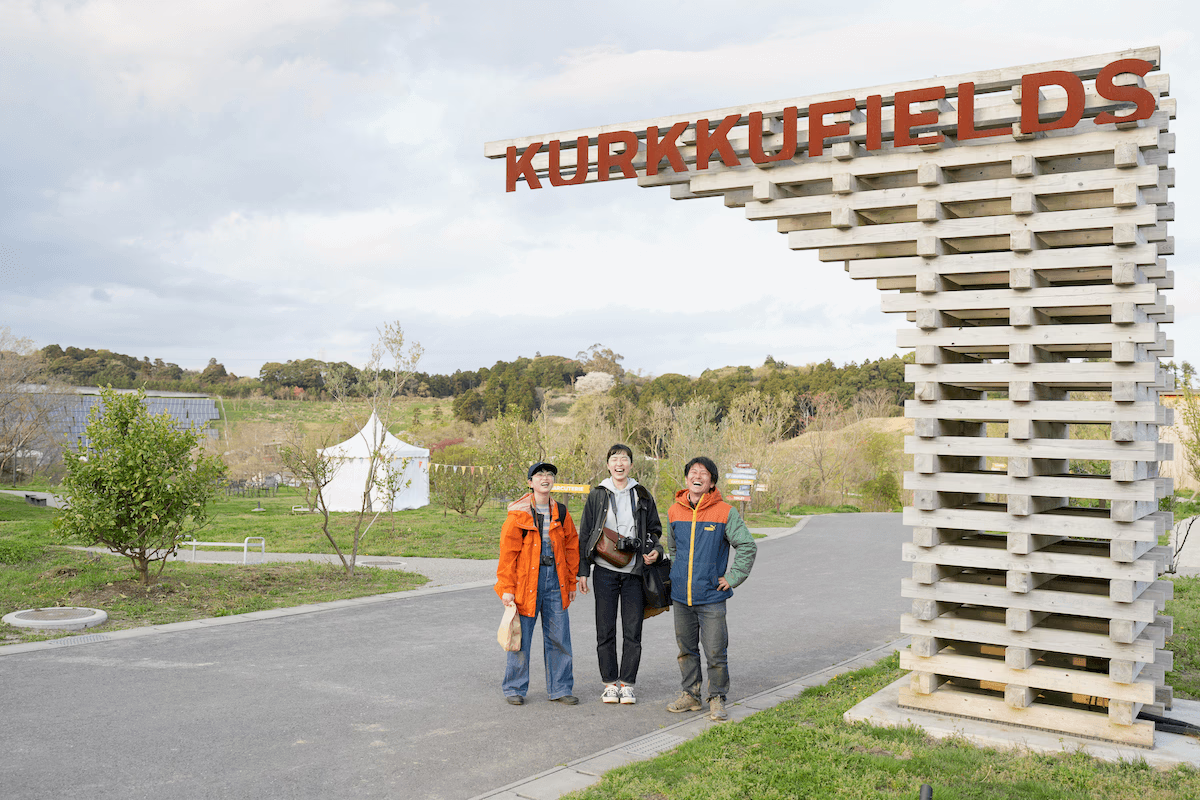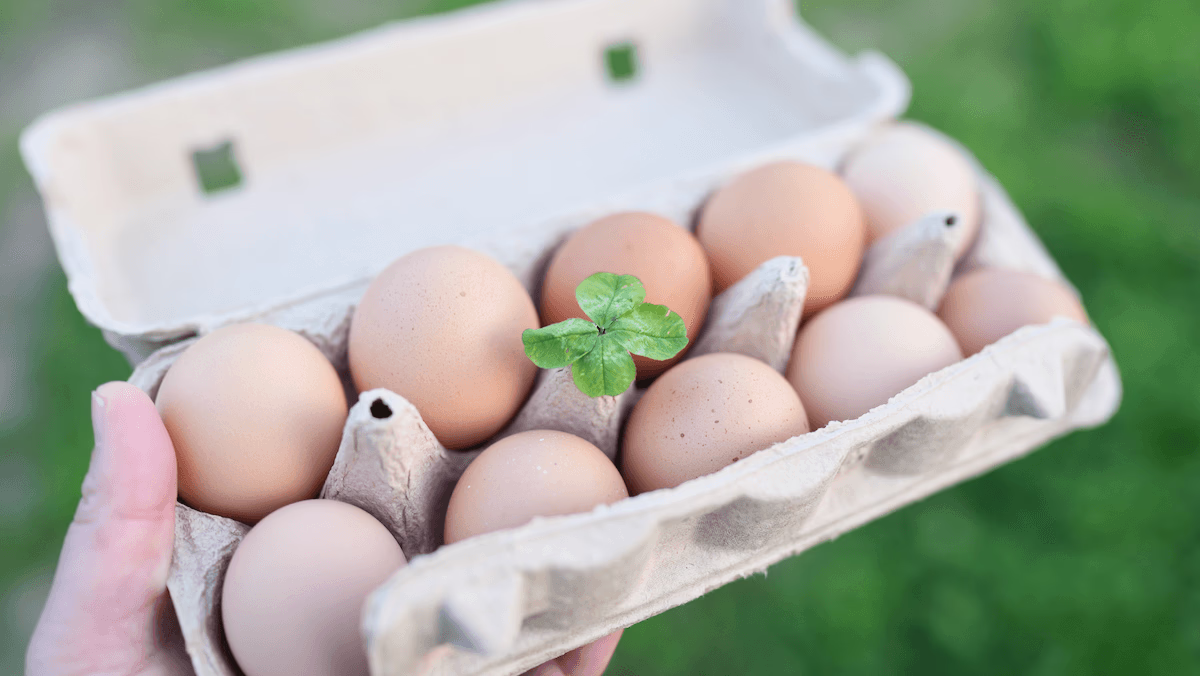初めまして。MONOSUS社食研の島村といいます。
私は、FarmMart & Friendsという東京の代々木にある小さなお店で働くことをきっかけに入社し、今は九段下にある九段食堂の店頭に立っています。
FarmMart & Friendsの店頭に並ぶ商品、九段食堂のメニューで使用する食材は、全国にいらっしゃる繋がりのあるみなさまからお預かりしているものたち。
商品や食材のことを知れば知るほど、おいしいものの裏側の一部を知ることができたようでなんだか嬉しくなります。愛着もわくし、自分の暮らしにも積極的に取り入れたくなる。毎日の食事も、いつもよりちょっぴりあたたかみが増す。
以前働いていた新潟県での仕事を通して、この感覚を知りました。つくり手のみなさんを近くに感じられることのあたたかさ。知れば知るほど、食べた時にはひときわおいしい。
この感覚を、お店や食堂を通じて食べてくださるみなさまに伝えるためにも、まずは私が、今携わっている仕事でお世話になっているみなさまのことを知りたい。周りとも、そんな気持ちを共有できたら嬉しい。そう思って、お世話になっている人たちのところに直接お伺いすることにしました。
最初にお邪魔したのは、FarmMart & Friends のジャムに使うにんじんや卵を届けてくれている、千葉の木更津にあるKURKKU FIELDS(クルックフィールズ)です。場内で行われるさまざまな循環の仕組み、おいしい卵を生んでくれる鶏が暮らす環境について、教えてもらいました。
目次
KURKKU FIELDSへ
代々木のFarmMart & FriendsからKURKKU FIELDSへは車で1時間半。都内から高速バスも出ていて、気軽に行くことができます。
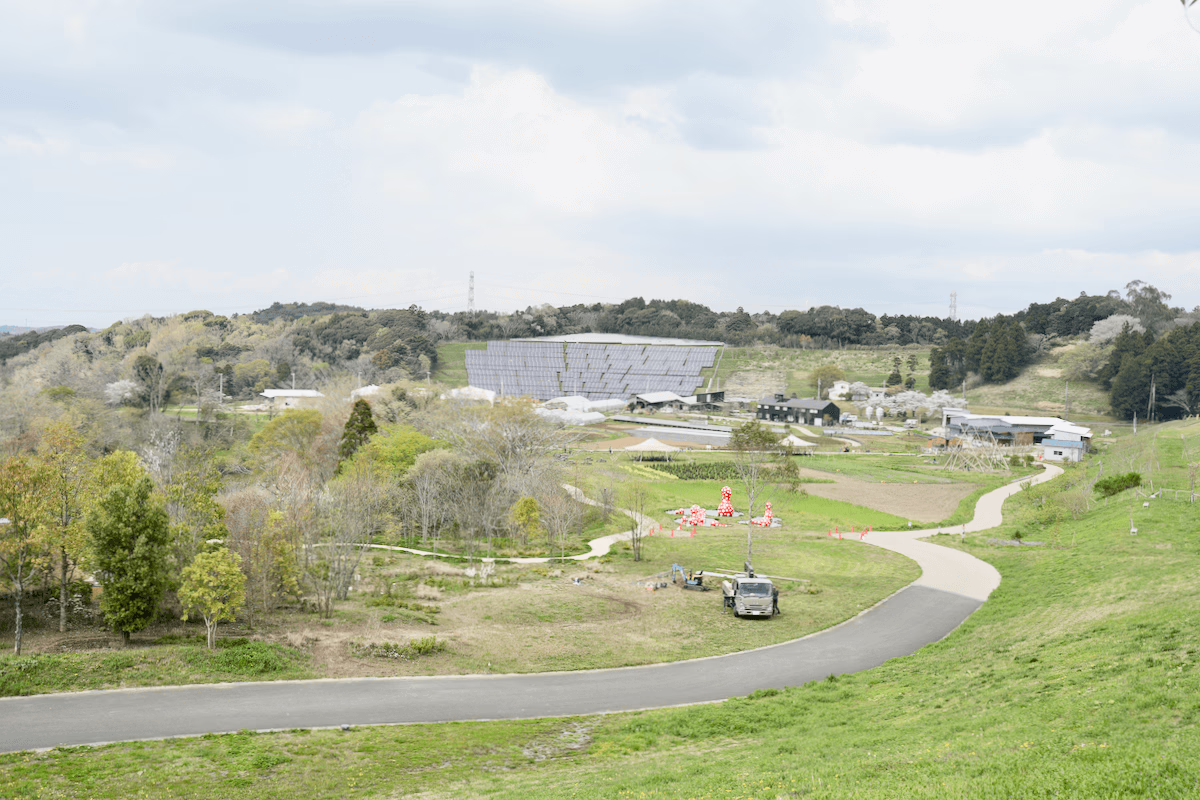
農業長の伊藤さんとはエントランスで待ち合わせ。まずは場内の施設をご案内くださいました。
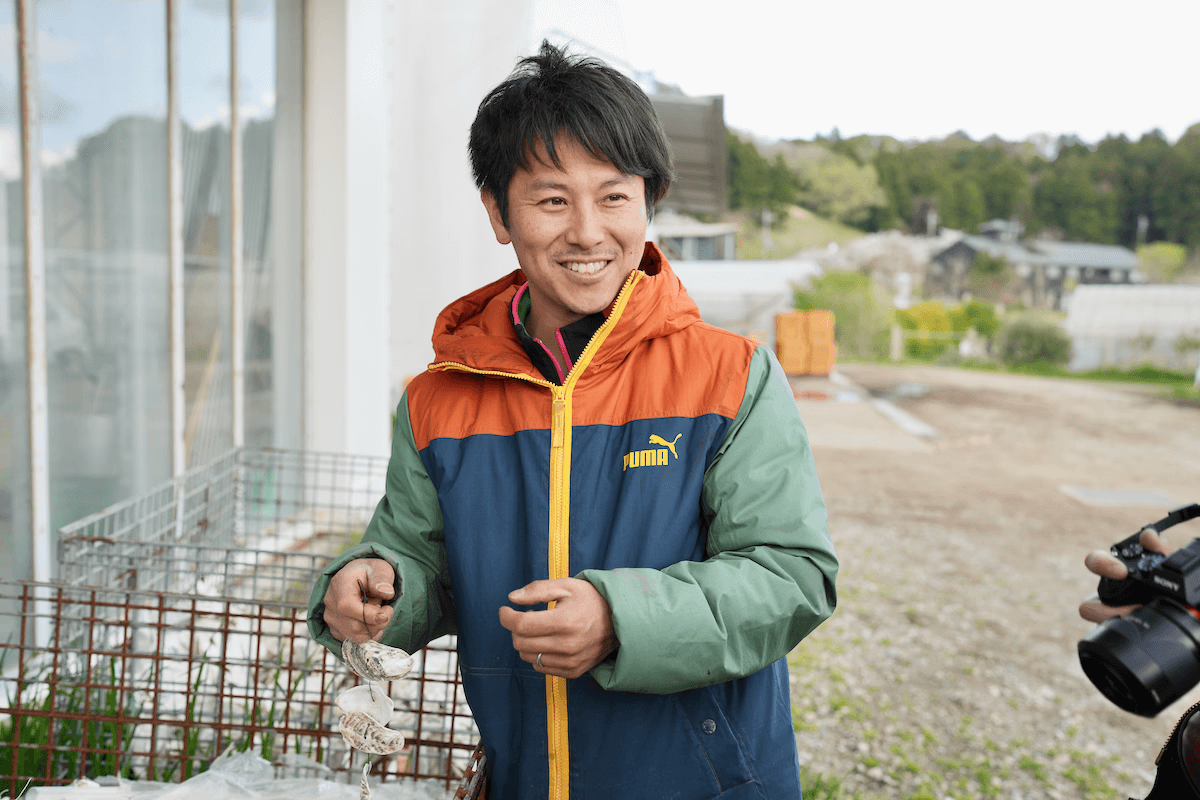
農業長の伊藤さん
牧場があったり、残土の受け入れがあったような広大な敷地を開墾して、伊藤さんたちが農業をはじめたのは14年ほど前。
農地を次の世代にも繋いでいくため有機農業に取り組み、今ではたくさんのニンジンやカブ、枝豆などを東京をはじめ全国に出荷しています。
その農場に併設するかたちでオープンした施設がKURKKU FIELDSです。場内では有機農法で野菜を育てることのほかに、丘で草をはんでいるブラウンスイス牛やヤギのミルクでチーズをつくる加工場があったり、ジビエを加工してソーセージやハムをつくるシャルキュトリー、食材をおいしくいただくダイニングやベーカリーなどが点在しています。
来場者はここで食事を楽しんだり、アート作品を鑑賞したり、野菜を収穫したり、宿泊したりと、さまざまな体験を通して、自然や命の循環を感じることができます。楽しみながらも、自分の食や暮らしについて考えるきっかけになってほしい。そんな想いから、施設内ではさまざまな取り組みが行われています。
伊藤さんにはたくさんの場所をご案内いただきましたが、なかでも私が印象的だったことをいくつかご紹介します。
循環を生むダイニング
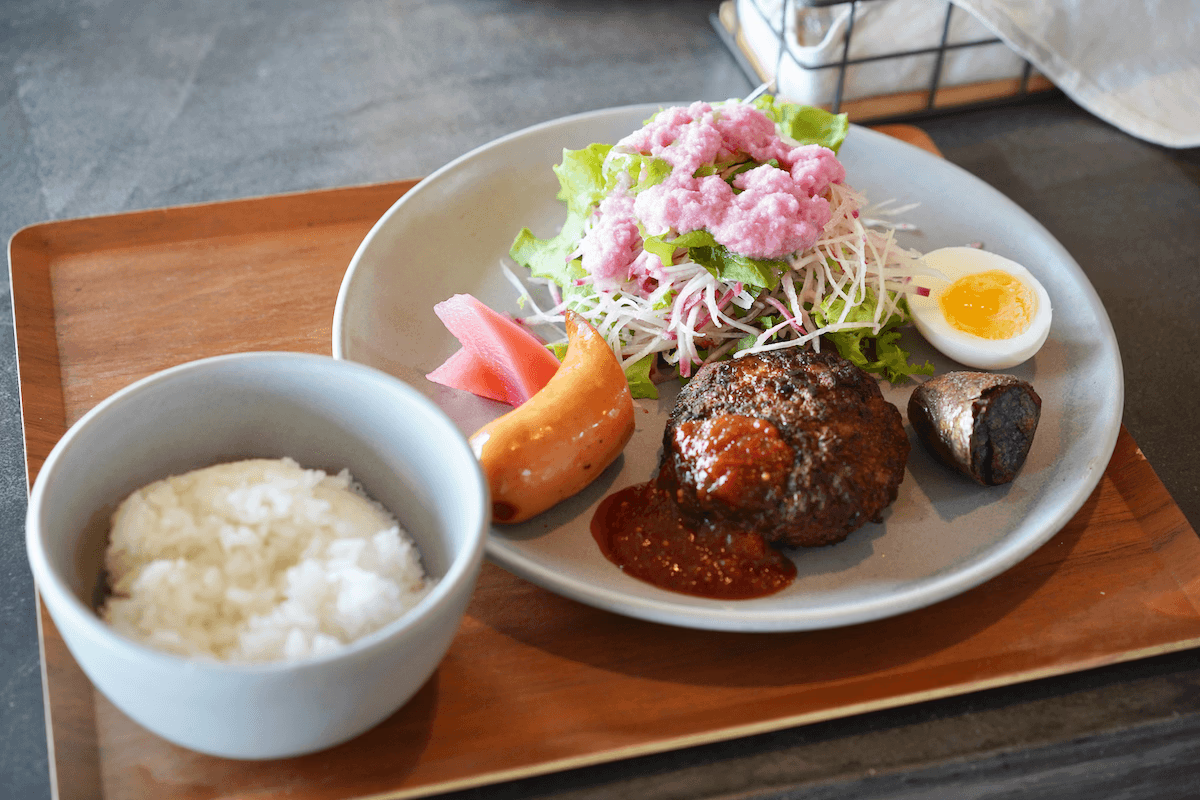
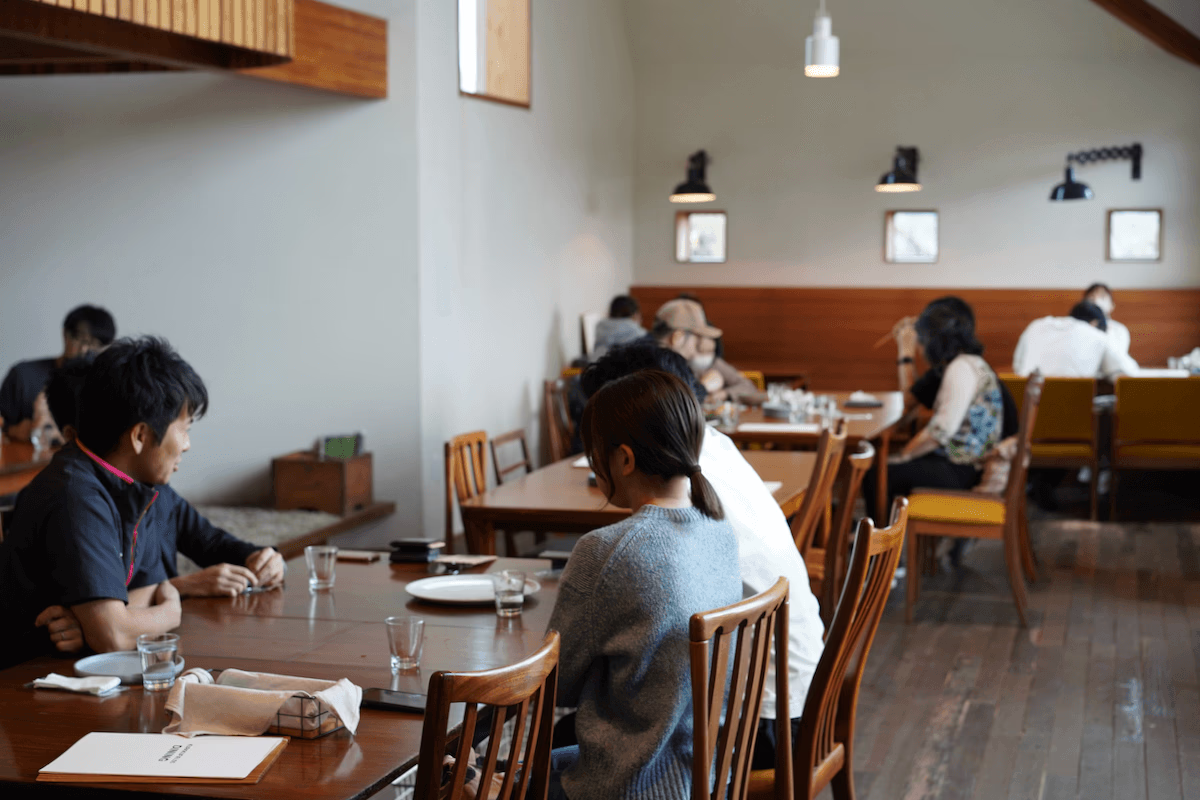
食材は基本的に、場内の農場で採れたものや近隣の山で狩猟したジビエなどを使っています。
私がいただいたのは、ジビエのお肉を使ったハンバーグがメインのプレート。ジビエらしい野生味のあるおいしさで、力強いエネルギーに溢れていました。サラダには、旬の赤大根がたっぷり。とれたてのみずみずしいお野菜に自家製のドレッシングがかけられていて、ドレッシングまで食べごたえがありました。
どれもシンプルな味付けで、素材の味がいきいきとしているお料理。食べているものからエネルギーをいただく、手触り感がありました。
おしぼりや持ち帰り用の容器は、土に還る素材を使用。場内で一度洗ってから、土に還しています。テイクアウト用の容器は、粉砕して牛糞と一緒に混ぜ、堆肥として活用されます。ダイニングから出た排水は、場内につくった小川に水が流れることで浄化されるバイオジオフィルターと呼ばれる仕組みを取り入れています。
ゴミを出さないコンポスト
ダイニングの裏、事務所の脇など、場内にはいくつかのミミズコンポストが設置されていました。ダイニングで働くみなさんが、調理した際にどうしても出てしまう食材クズなどをここに入れて、中身をかき混ぜます。何ヶ月かすると、完熟した堆肥が下から落ちてきます。この堆肥も、農場で作物を育てるために使われます。

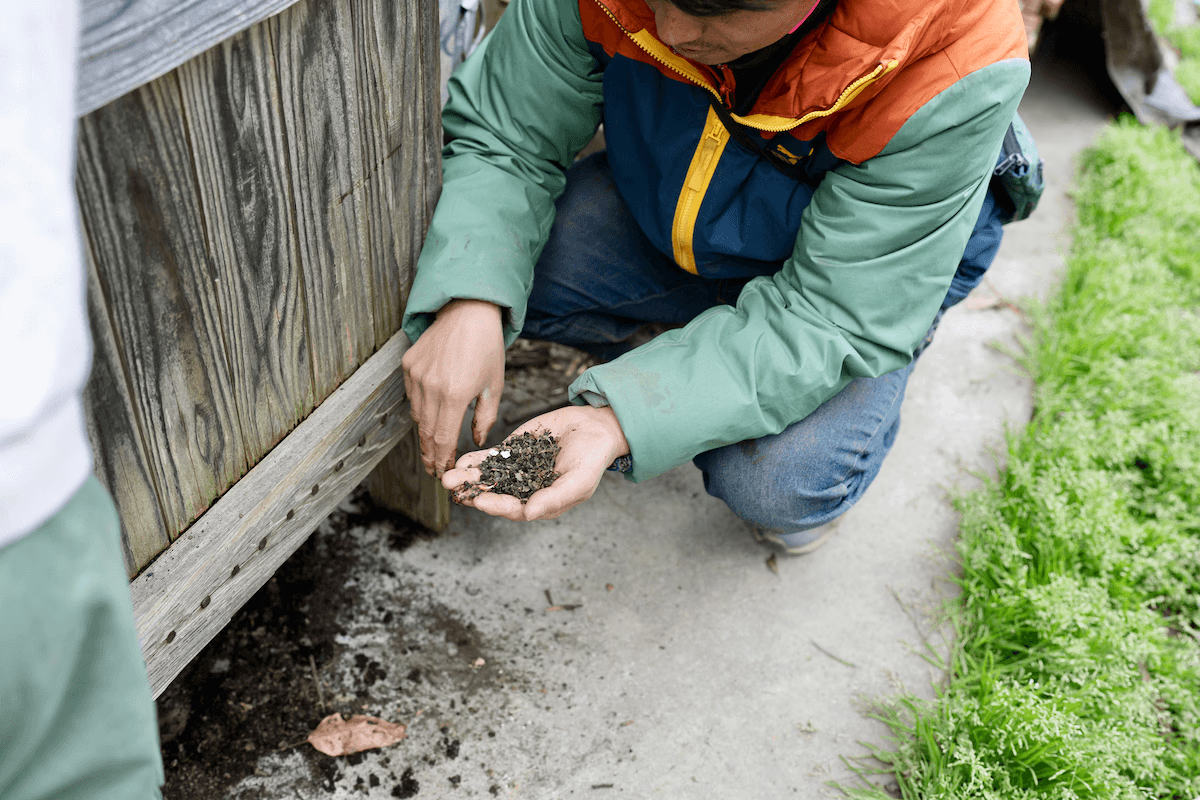
農場(オーガニックファーム&エディブルガーデン)
場内には、たくさんの野菜を育てているオーガニックファームと、来場者が植えたり収穫したりといろいろな体験ができるエディブルガーデンがあります。
ここでは1年を通して様々な作物が育てられていて、コンポストでできた堆肥も使います。伺った3月末は、ちょうど小麦の穂が顔を出したところ。

その横ではプチヴェールが美味しい時期を迎えていて、畑で摘んでそのままパクリ。甘くておいしい!「よかったら収穫していって」と言ってくださり、ポケットに入れてお持ち帰り。自宅でも焼いて塩をかけていただいたのですが、これぞ旬!この一瞬しか味わえないおいしさを、家族とも共有できました。
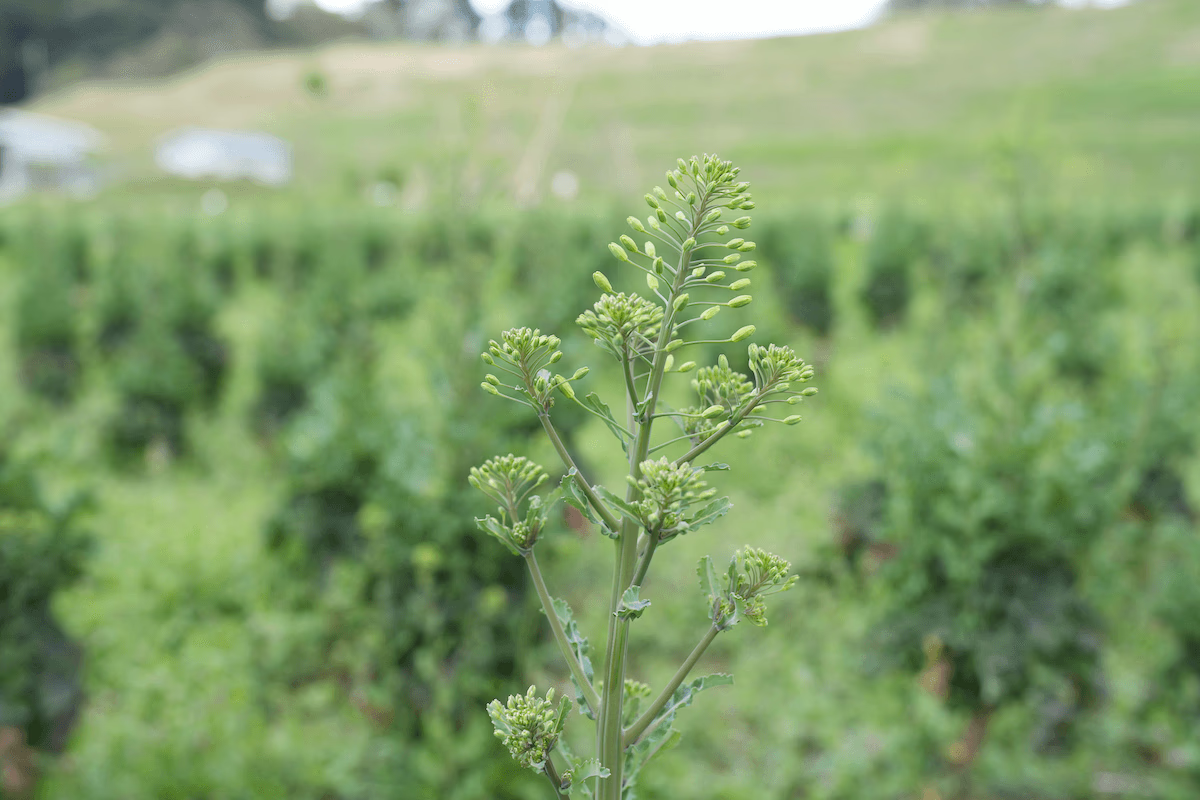
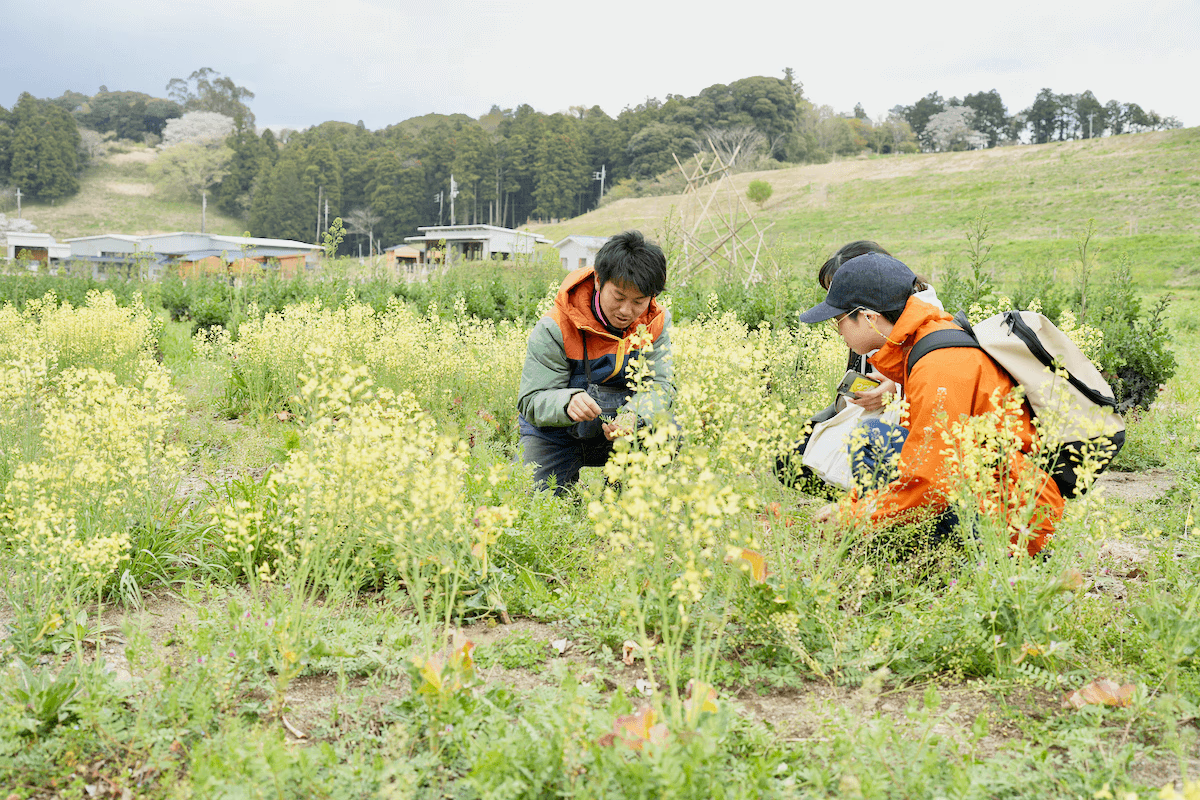
農場の様子は今しか見ることができないものばかりで、ひとつひとつが本当に新鮮でした。春先には花を咲かせたり新芽がめぶいたりする植物が多いですが、実際に畑でみることができる期間はほんの一瞬。蕾の様子や花の開きぐあいは刻一刻と変化をしていきます。この「今だけ」の変化を実際にみて感じることができる喜びって、とても貴重だと感じた時間でした。
にんじん愛
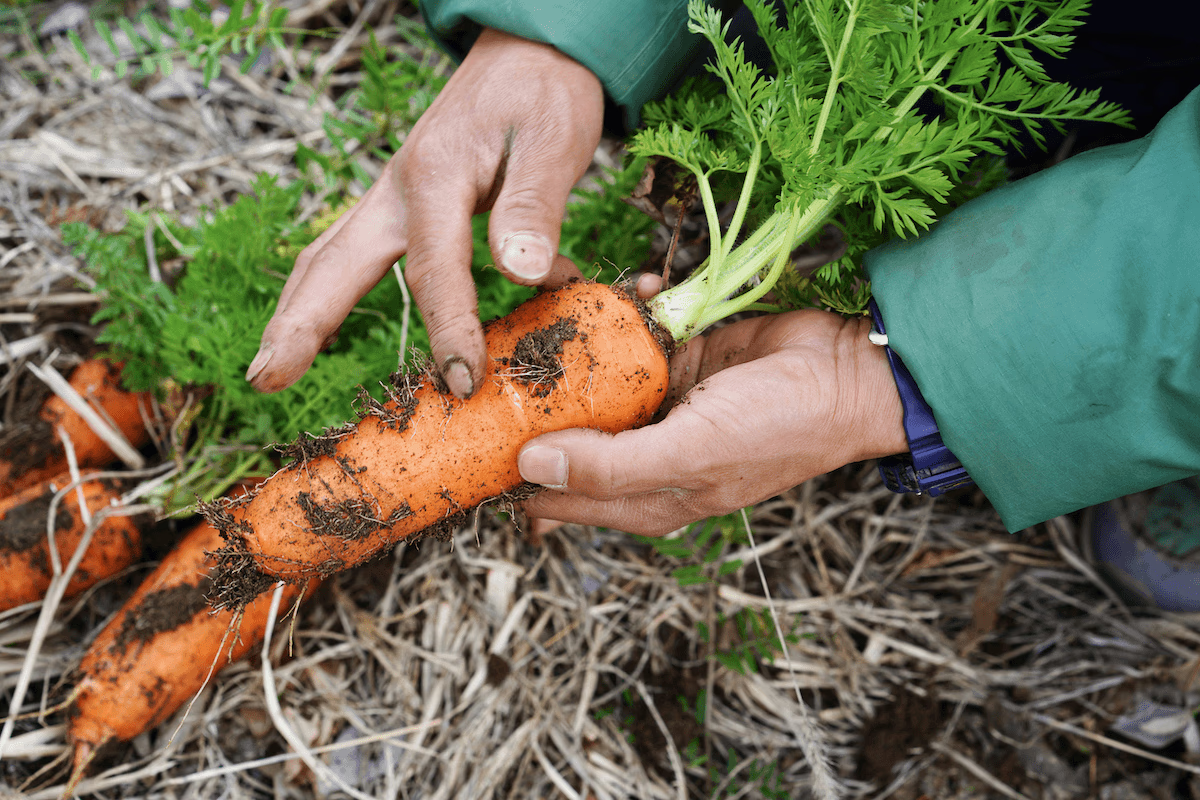
畑を楽しそうに案内してくれた農業長、伊藤さんの推しは「にんじん」。
すでに収穫の時期を過ぎていましたが、わずかに残った人参の葉がちらほらと、顔をのぞかせていました。
「鮮やかなオレンジ色の根に、濃い緑色の葉っぱがつく。この色合いは他にはないじゃないですか。見てください、クリスマスツリーにできるんじゃないかというくらいバランスのとれた葉っぱ。冬は葉っぱに霜が降りるんです。そうすると、白い化粧みたいに霜がついて、結晶になるんです。この写真を万華鏡加工すると、本当に綺麗なんですよ。」
「僕、にんじん色のウエアを探しちゃうくらい、人参が大好きなんです。」
にんじん愛の止まらない伊藤さんが育ててくださったにんじんは、FarmMart & Friendsでもジャム、そしてドーナツになっています。
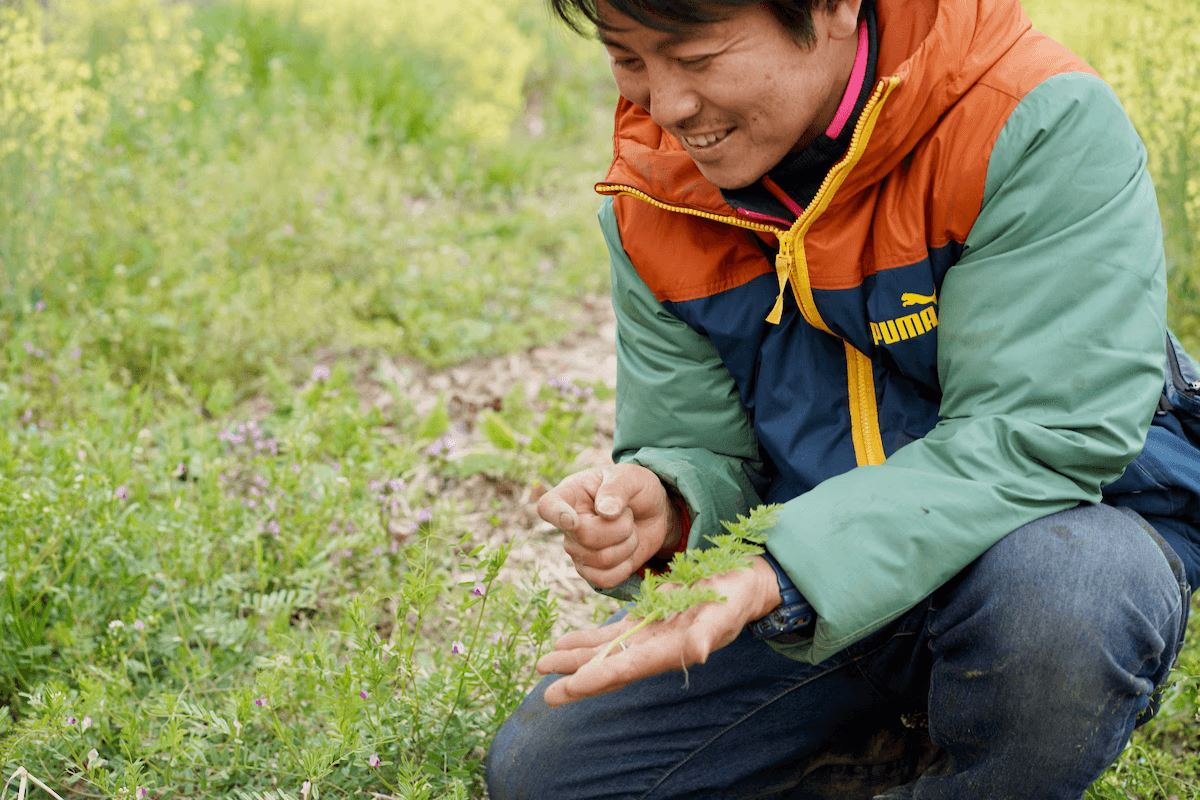
ダイニング・コンポスト・農場など、場内全体をみていくと、全てが循環の一部となるように整備されていました。
普通なら「ゴミ」といわれるもののほとんどを、循環させていくためには何ができるのか。KURKKU FIELDSでは毎日みんなで考えて行動し続けていて、まさに「すべて捨てずに循環させて生み出すこと」を体現している場所でした。
伊藤さんをはじめスタッフのみなさんは、最初からこの仕組みをつくることができたわけではありません。日々学び続け、話し合い、地域の方も巻き込んで「循環」について取り組んでいました。大変ながらもとてもわくわくと楽しそうな表情をされているのが印象的でした。
養鶏をみてみる
「『鶏たちの運動場』って呼んでいるんです」と伊藤さんが嬉しそうに連れて行ってくれたのが、鶏たちが元気に走り回っている鶏舎です。


なんと、運動場から脱出している鶏も1羽。跳躍力が高いそうで、いつも外を歩き回っているため「ウサイン・ボルト」と呼ばれているそうです。

FarmMart & Friendsでは、そんな鶏たちが産んでくれた卵を届けていただき、販売しています。
養鶏を担当されている松村洸大さんが、鶏たちのこと、卵について詳しく教えてくれました。
ここでもお話のなかで印象的だったことを、いくつかご紹介します。
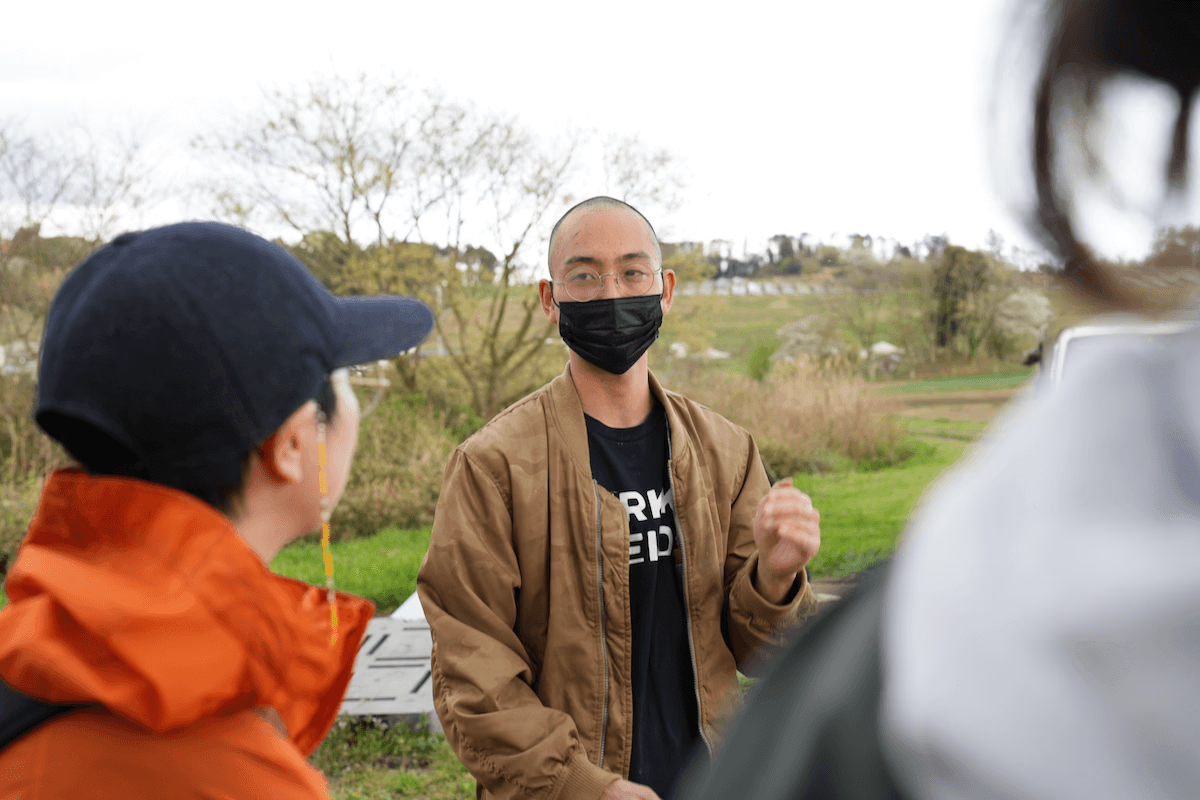
松村洸大さん
松村さんが大切にしていること:鶏のくちばし
「日本の養鶏場の90%はケージ飼いという方法です。KURKKU FIELDSでは土の上で飼う平飼いを行っています。ここにいるのは"もみじ"と"岡崎おうはん"という、純国産の鶏種です」
鶏は、3世代遡って国内で育てられたものならば、純国産鶏と呼ぶことができるそうです。
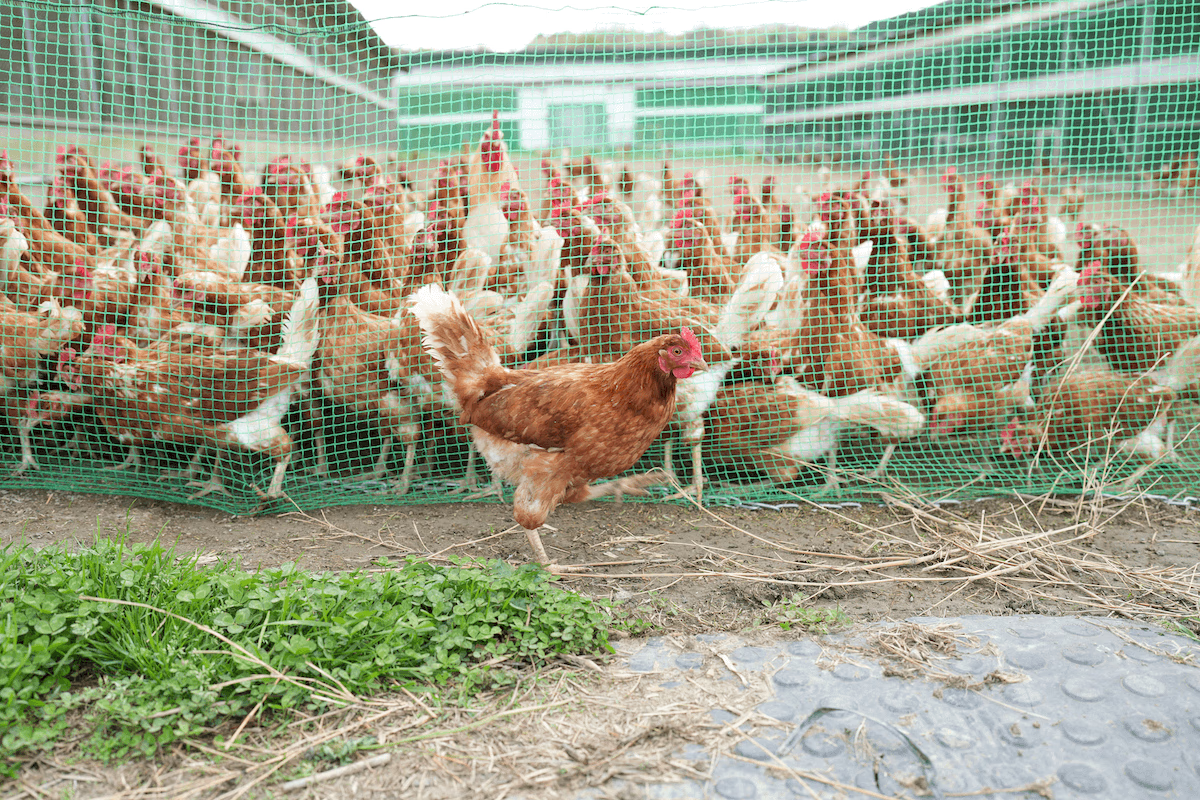
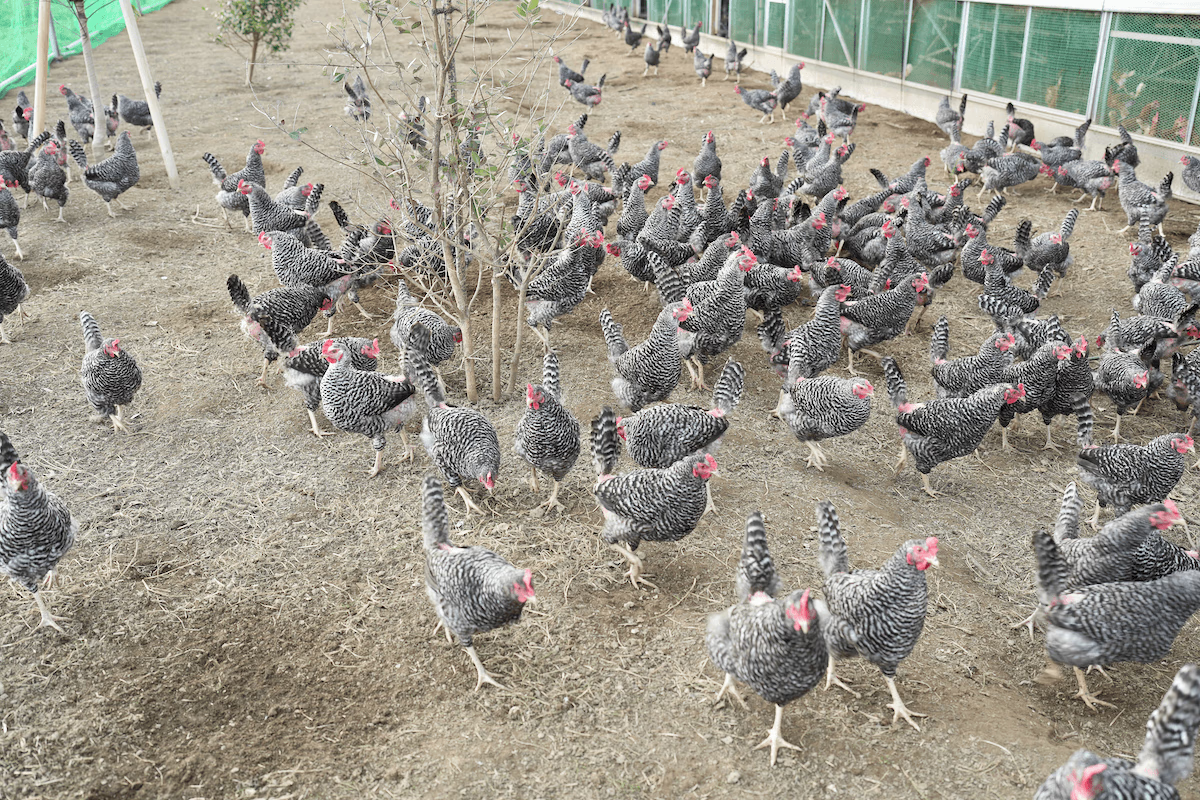
鶏を観察していると、どの鶏も、 お尻の毛が薄くなっていることに気づきます。
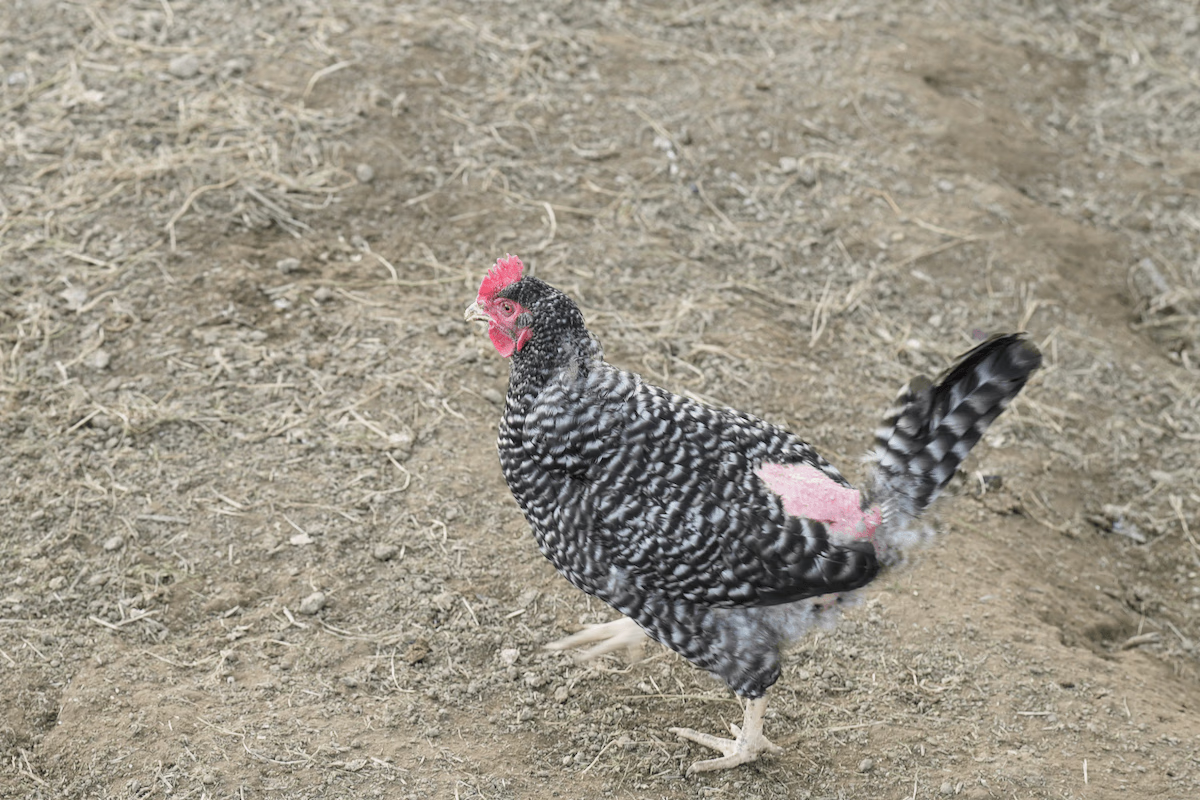
「鶏がお互いにお尻をつついてしまうので、だんだんとはげてきてしまうんですよ。血が大好きなので、さらにつついちゃって。平飼いでは共食いしてしまうこともあるんです。」
共食いしてしまうなんて。衝撃的でした。
鶏同士が傷つけあってしまうことを防ぐため、一般的な養鶏場では、「デビーク」と呼ばれるくちばしの切断が行われることもあるそうです。
KURKKU FIELDSでは、できるだけ自然のまま飼育できるようデビークは行わず、つつく行動がひどくならないように日々試行錯誤しています。
「いかに羽をはげさせないか、食べさせないかはとても重要です。」
松村さんの力強い言葉に、私たちはまた、松村さんの鶏への愛情の深さを感じました。
松村さんが大切にしていること:鶏の食べるもの
松村さんのお話を聞いている横で、伊藤さんが外側に生えている草をむしって、運動場へほいっと投げ入れています。鶏たちは大興奮。もちろん餌は十分に与えられていますが、やっぱり鶏たちは、青々とした草が好きなんだそうです。

「農業チームから出る野菜クズも好きです。僕の観察上、鶏たちは食べることに対して3大欲求あって。水、動物性タンパク質、そして緑餌(りょくじ、葉っぱ類のこと)が大好きなんですよね。これからの季節は農業チームが草刈りをする時期なので、鶏たちも葉っぱ類を多く食べるようになります。葉っぱ類を多く食べるようになると、卵の黄身の色がより黄色くなります。」

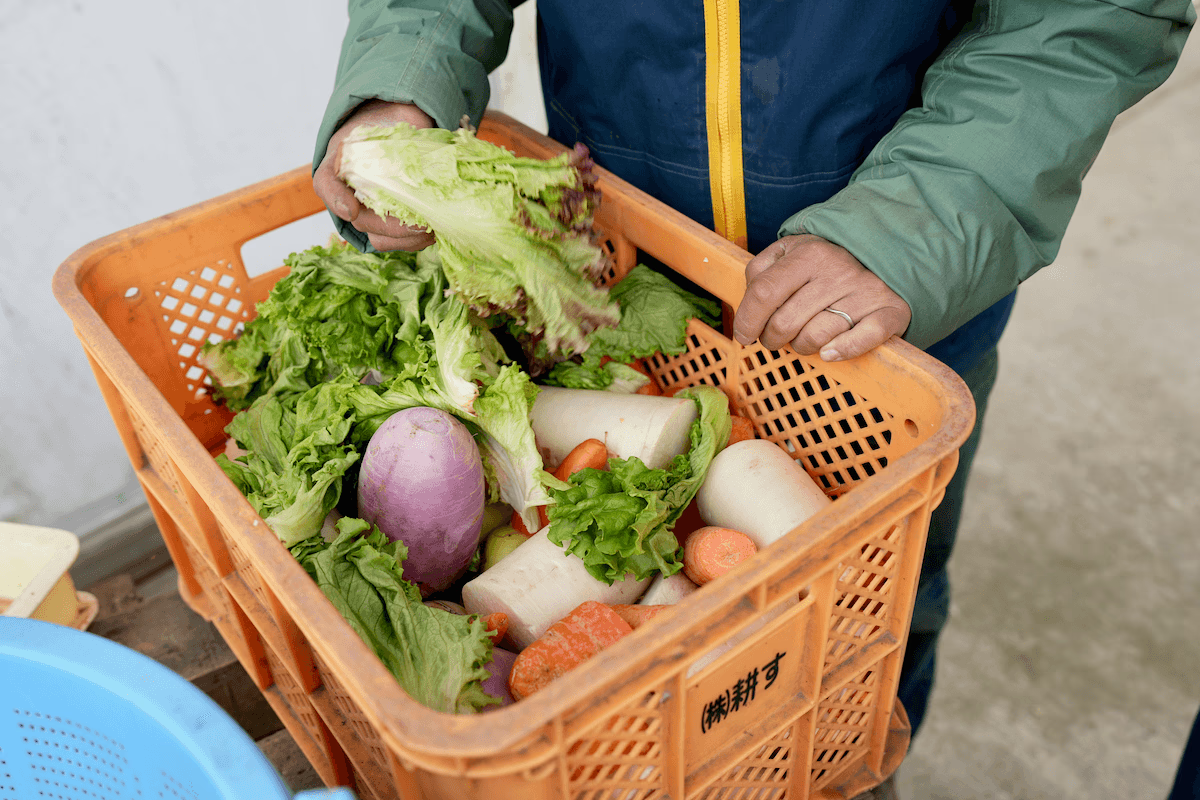
KURKKU FIELDSの卵は季節の変化、鶏たちの食べているものによって変化する。
言われてみれば当たり前のようですが、教えてもらってやっと気が付いたことでした。
「鶏たちは春に草がいっぱいあることがわかっているんです。目の前の原っぱに青々と草が生えているのは見えているけど食べられない。それがストレスになっていないかな。我慢が辛いのでは...」
ふとこぼれた松村さんの一言。松村さんはどこまでも鶏たち想いでした。
鶏たちが食べるもののうち、動物性タンパク質になるもの。これもKURKKU FIELDS場内で、通常だったら捨てられてしまうものから餌をつくっていました。
「シャルキュトリー」という食肉加工・販売を行う場所では、近くの山でとれた鹿や猪などのジビエを解体するところから行っています。その加工の過程で出る、食肉としては使うことができない部位のお肉が、鶏の飼料となります。

松村さんが大切にしていること:たまごの旬
「通常鶏は冬至に向かって産卵率が下がり、春が産卵率のピークになります。一般的な養鶏場では、その変動が年間であまり起きないよう、日照時間をコントロールする"人工照射"を行います。」
人工照射を行うと、産卵期間は通常より短期間になるけれど、1シーズンの産卵率は安定します。ただ、その分早く卵を産めなくなって、短期間で屠殺されてしまうことになるそうです。効率を求めるとそのほうが良いようにも思えますが、より自然にならう方法をとっているのが、松村さんのやり方。
「春は産卵率が高くなるので、その分供給量も増えやすいんです。」

「卵にも、旬があった。」
私たちにとっては、新しい事実でした。
「旬がなさそうな卵や牛乳にも、旬がある。このことを感じられるようになれたら、なんだかちょっと嬉しいよね。」と伊藤さんも一言。
ちょっとした季節の変化に気がついていくことって、毎日のくらしを味わうひとつのヒントになりますよね。卵にも旬があるなら、卵を販売したりドーナツをつくって届ける役割を担っている私たちにもできることがあるのでは。そう考えると、なんだかワクワクしました。

帰り際には、養鶏の松村さんから不揃いの卵のお土産をいただきました!
蓋を開いてみると、なんと。よつばのクローバーのサプライズが...!!(最初のたまごの写真です)
こんなにもあたたかな松村さん、お店に来てくださるみなさんにも伝えたい!
春にたくさん卵を使う商品、例えばカスタードクリームのドーナツやプリンを多くつくって販売することで、それを買ってくださるお客さまにも卵の旬をお伝えできないだろうか...と、同行したお店のメンバーと、お店を通して卵の旬を伝える方法も考え中。
お客様に卵の先にある世界や人となりを伝えることができたらいいなと、この日撮った写真をFarmMart&Friendsの店頭に置かせていただきました。松村さんや鶏舎の様子、お店でご覧いただけたら嬉しいです。
私自身、KURKKU FIELDSには初めてお伺いしました。場内のどこを歩いていても新しい発見の連続。ほとんど全てのフィールドをご案内いただいたのですが、ひとつひとつをゆっくり味わうためには、もっともっと時間が必要だったなあと感じています。
ちょうど伺った時期の春の景色をみながら、「夏にはきっとたくさんのお野菜が豊かに実っているのだろうなあ」だとか、「早朝の日の出のタイミングの場内はどんな空気を感じるここができるのだろう」と、想像は膨らむばかり。季節ごとに訪ねたくなる場所でした。
宿泊施設もあるので、今度お伺いする時には宿泊してみようと思っています。
みなさんもぜひ直接、KURKKU FIELDSを体験しに行ってみてください。
